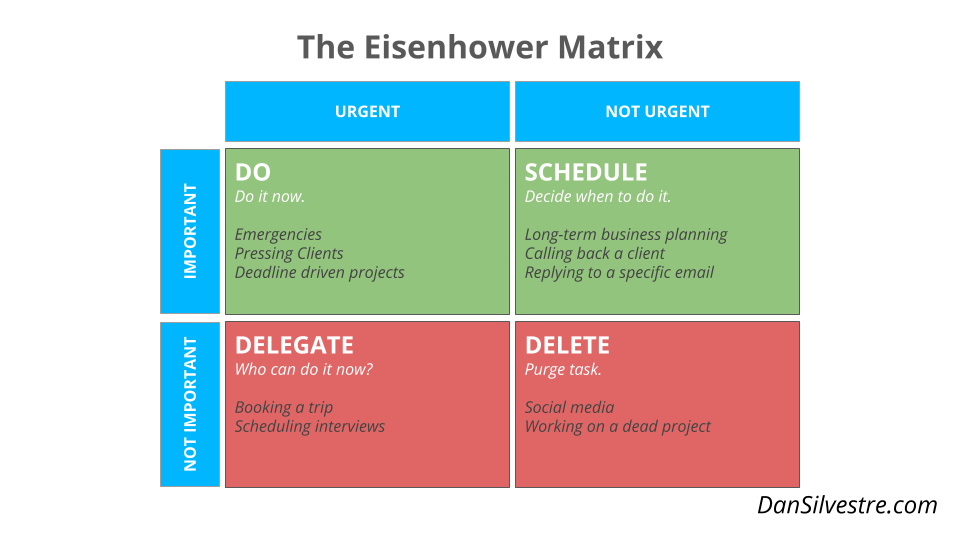Fri, 27 October 2023
You need to systematically decide what deserves your attention now, what deserves your attention later, and what doesn’t deserve your attention at all. How to do a weekly review:
Decide what goes on your Weekly Big 3 using The Eisenhower Matrix.  Spend 95% of your time on Quadrant 1 and 2 activities. Clear Quadrant 3 tasks quickly (delegate what you can) and eliminate all Quadrant 4 tasks. How to design your day:
|
Fri, 20 October 2023
Chapter 7 – Consolidate: Plan Your Ideal WeekDesign your work to focus on just one thing at a time. Batching: lumping similar tasks together and doing them in a dedicated block of time MegaBatching: organizing entire days around similar activities to enable you to stay focused and build momentum. The 3 categories of activity:
How to plan your ideal week in 3 steps:
|
Fri, 13 October 2023
If you regularly struggle to get to the bottom of your to-do list and think the solution is finding more hours in the week, best-selling author Michael Hyatt says you’re wasting your time. Instead, the leadership and personal growth expert insists that the key to achieving more is to actually do less. Tune in as Michael shares his three-step process for taking control of the time you have so you can become more focused and productive—and infinitely less overwhelmed. Now that’s what we call a win-win. We will return to our study of Free to Focus in the next episode. |
Fri, 6 October 2023
Chapter 6 – Delegate: Clone Yourself—or BetterDelegation means focusing primarily on the work only you can do by transferring everything else to others who are more passionate about the work or proficient in the tasks. Some of us refuse to delegate by convincing ourselves we can’t afford it. But the hours you spend on Desire Zone tasks will always be more profitable than the time you’re wasting anywhere else, so the cost of delegation pays for itself—and then some. How to delegate:
The 5 Levels of Delegation:
|
First Things

Categories
generalPodcast Episodes
Archives
MarchFebruary
January
December
November
October
September
August
July
June
May
April
March
February
January
July
June
May
April
March
February
June
May
April
March
January
December
November
October
March
February
January
December
November
October
September
August
July
June
May
April
March
February
January
December
November
October
September
August
| S | M | T | W | T | F | S |
|---|---|---|---|---|---|---|
| 1 | 2 | 3 | 4 | 5 | 6 | 7 |
| 8 | 9 | 10 | 11 | 12 | 13 | 14 |
| 15 | 16 | 17 | 18 | 19 | 20 | 21 |
| 22 | 23 | 24 | 25 | 26 | 27 | 28 |
| 29 | 30 | 31 | ||||
Syndication

